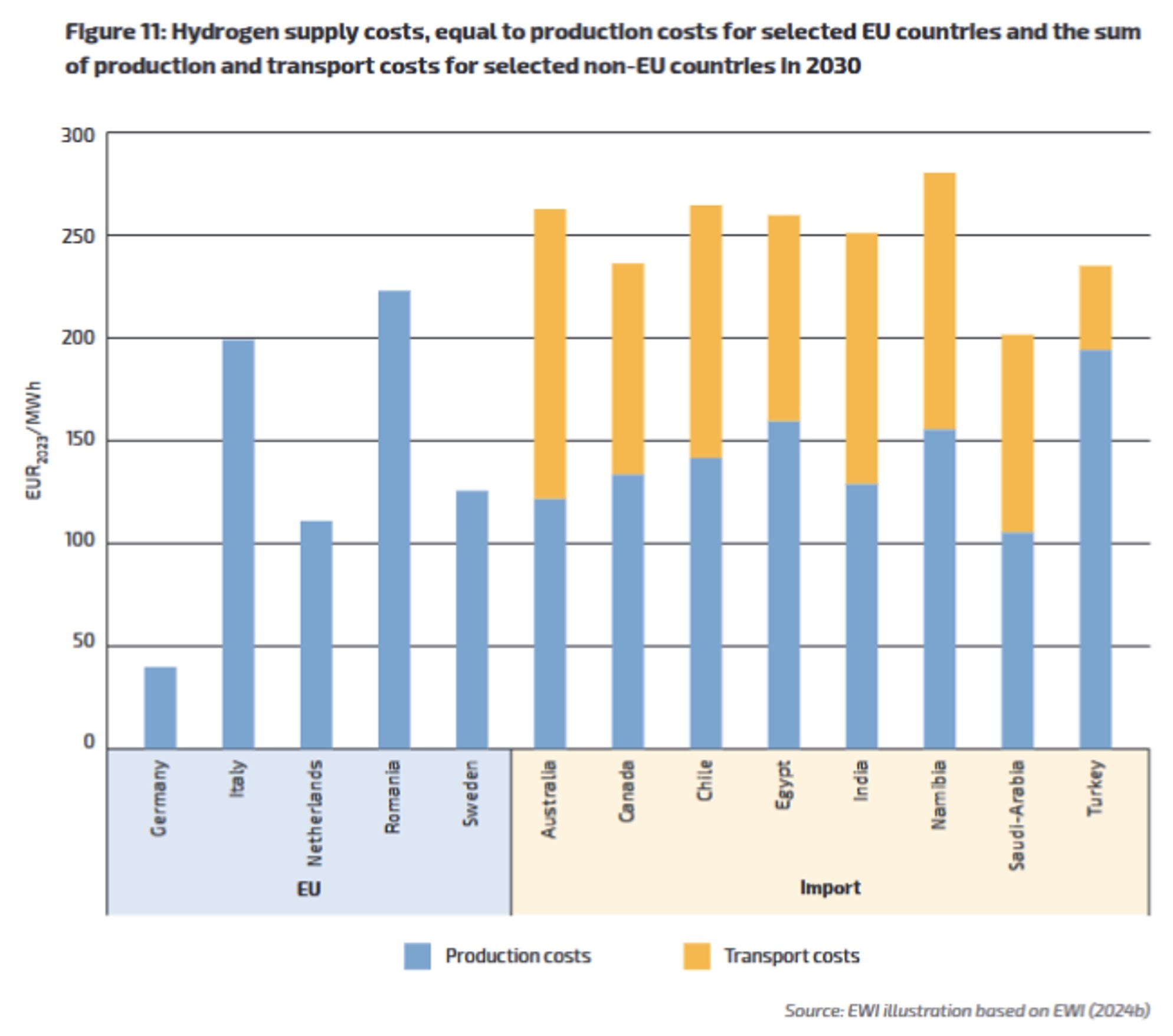Analysing the challenges and risks of the EU hydrogen strategy
The recent study "H2 Reality Check", conducted by the Center for Advanced Security, Strategic and Integration Studies (CASSIS) at the University of Bonn and the Institute of Energy Economics (EWI) at the University of Cologne, analyses the challenges and risks of the EU hydrogen strategy, also taking into account new geopolitical and geo-economic circumstances.
"H2 Reality Check" concludes that the current EU targets for 2030, i.e. 40 GW of electrolysis capacity, production of 10 million tonnes of hydrogen (H2) per year within the EU and additional imports of the same magnitude, are probably not achievable under the current conditions. While hydrogen (H2) continues to be seen as a crucial part of the EU's climate neutrality strategy, it cannot serve as a silver bullet for achieving the (overly) ambitious 2030 targets. In other words, H2 cannot be seen as a universal solution for the energy transition - on the contrary, a realistic and evidence-based H2 strategy is advocated to build a resilient H2 economy. The main challenges include:
1. economic and technological barriers: The production costs of green hydrogen have increased instead of decreasing, making it currently twice as expensive as blue hydrogen. The expected competitiveness of green H2 by 2030 is considered unrealistic given the current challenging framework conditions. The costs of importing H2 into the EU - i.e. taking into account the production and transport costs up to feed-in into the EU - range between €202 and €280/MWh, depending on the production country analysed in the study (Germany's H2 partner countries). Transport and the considerable H2 storage costs within the EU are not yet included in these costs - especially as it must be taken into account that consumer prices - taking into account a profit mark-up - must inevitably be higher than the import costs quoted. The supply costs in the EU countries range between € 111 - 223/MWh - also excluding internal transport and H2 storage costs. The costs are shown in the chart below. How the very low production costs in Germany come about is not clear to me and is also not explained in the study. The graph shows that favourable production costs in non-European countries with very high RES potential are (partially) more than offset by the high transport costs. Nevertheless, H2 imports will be unavoidable as there is simply not enough space available in the EU - due to the dense population - for the installation of additional wind power and PV systems, which are necessary to cover the entire electricity demand for H2 production.

It should also be noted that some of the technologies required for the H2 ramp-up are still at an early stage of development and are therefore not yet ready for large-scale deployment.
2. changing demand forecasts: Due to advances in electrification technologies and higher projected costs for H2 production, new research suggests lower future H2 demand. This could slow down the introduction of hydrogen-based solutions and reduce the EU's dependence on imports.
3 Geopolitical and supply risks: The intended high H2 imports into the EU, especially from unstable non-European countries, may entail geopolitical risks. China's dominance in the markets for critical raw materials and electrolysis technology must also be taken into account with regard to the EU's dependency.
4. infrastructure and investment gaps: The necessary expansion of H2 infrastructure (transport, H2 storage and production), is progressing slowly within the EU and is lagging far behind targets. In non-European countries, the very high investment requirements necessary for the production of green H2 are usually not addressed at all. This approach creates uncertainty about their feasibility.
5 Policy and coordination needs: To adequately address security of supply, geopolitical risks and industrial competitiveness, Member States' strategies need to be harmonised in terms of ambition and detail H2 is still seen as crucial for decarbonising hard-to-electrify sectors, but achieving the EU targets will require overcoming significant economic, technological, geopolitical and political barriers.
The results of the "H2 Reality Check" study largely coincide with the statements discussed in the webinar "Is the hydrogen hype over or is more realism needed?" - although it should be noted that the aforementioned webinar went into more detail about the "distracting" details and reasons.
